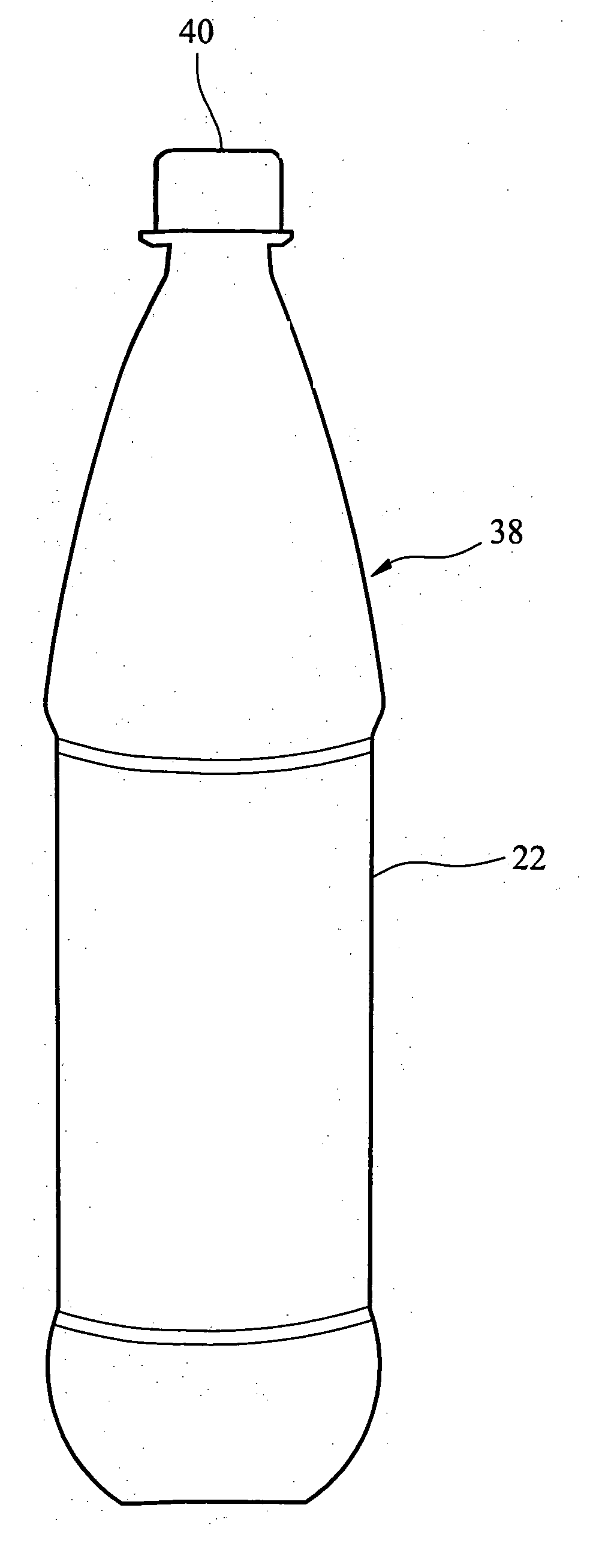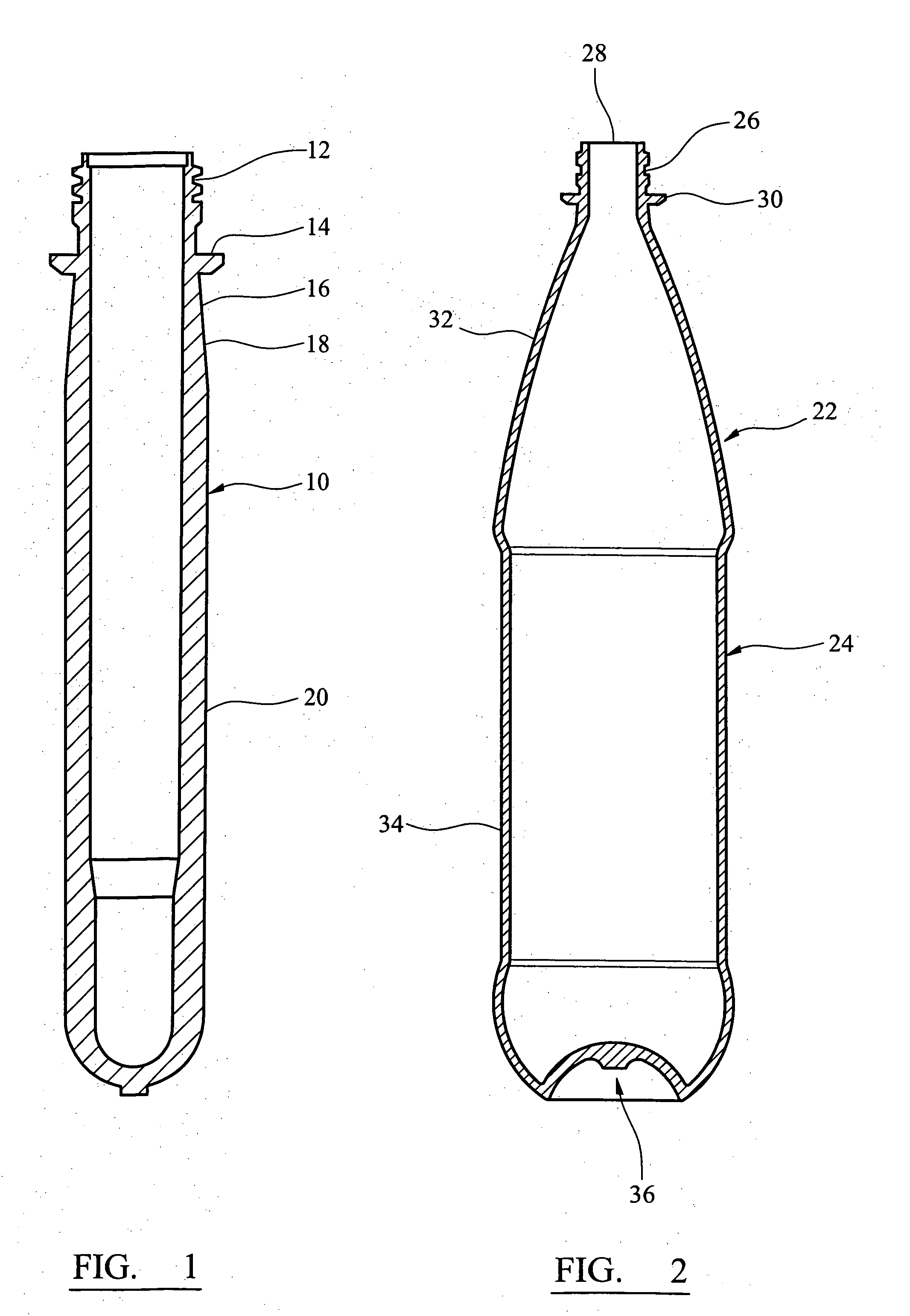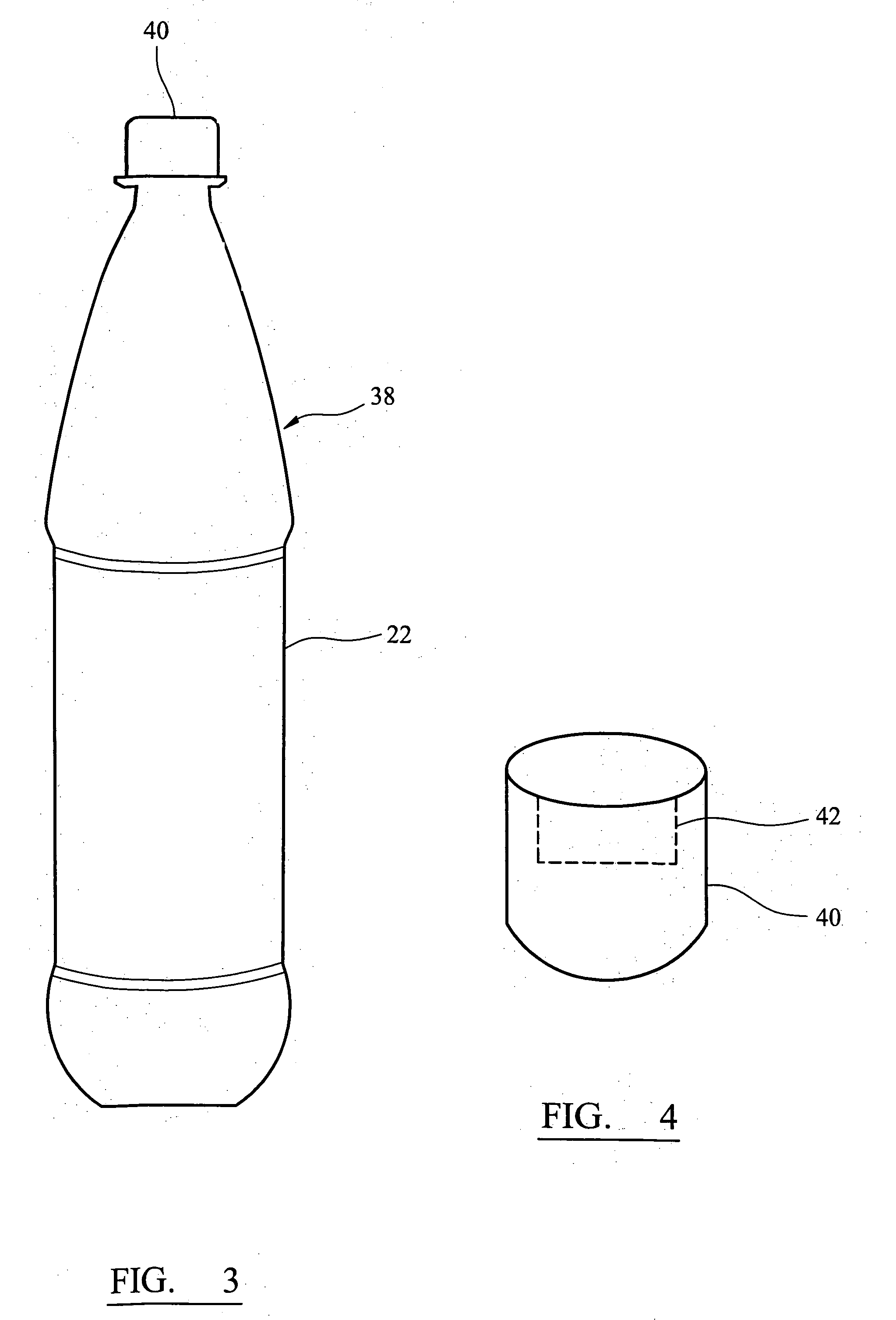Scavenging oxygen
a technology of oxygen and oxygen, applied in the field of scavenging oxygen, can solve the problems of limiting the applicability of polymers, affecting the stability of oxygen-containing containers, and all polymers showing some degree of permeability to oxygen, so as to achieve low catalyst amount, minimal impact on other package properties, and high reaction rate
- Summary
- Abstract
- Description
- Claims
- Application Information
AI Technical Summary
Benefits of technology
Problems solved by technology
Method used
Image
Examples
examples 1-3
[0072]Palladium acetate was dispersed into tributyl citrate at 1 and 10 wt % loadings, and the resulting dispersions were blended with Wellman Ti818 PET resin at a let-down ratio of 0.21% to provide 1.0 and 10 ppm Pd loadings in the PET. The resulting dispersions and the base resin were separately injection molded into 24 gram preforms and 500 ml bottles were blown from the preforms. There were thus obtained 500 ml bottles containing 0, 1.0, and 10 ppm Pd as a fine dispersion.
[0073]These three variables were subjected to MOCON™ testing for oxygen ingress using as a carrier gas nitrogen containing 3 volume % molecular hydrogen. The apparent steady-state rate of oxygen ingress is shown in Table 1 and FIG. 5.
TABLE 1ppm PdO2 ingress rate (cc / pkg-day)S.D.Example 100.04900.0014Example 21.00.00170.0002Example 3100.00100.0001
examples 4-5
[0074]Into Dow Chemical LDPE 9931 was blended with 4 wt % sodium hydride (60% dispersion in mineral oil) or with 4 wt % sodium borohydride. Each variable was injection molded into 2 inch×3 inch plaques that were 30 mils thick over one half of the plaque and 45 mils over the remaining portion of the plaque. Each plaque weighed approximately 3.8 grams. After molding, the plaques were heat sealed in foil bags until tested. To test the plaques, one plaque was placed into a 100 ml graduated cylinder, which was then filled with water and inverted into a water-filled 1 liter beaker. Hydrogen generation was measured by noting the amount of water displaced from the graduated cylinder over time. The results are shown in FIG. 6. As can be seen, when these active substances are incorporated into a polymeric matrix, the rate of hydrogen generation is greatly reduced, and that molecular hydrogen is released over a prolonged period of time.
examples 6-7
[0075]Two 4 wt % sodium borohydride / LDPE plaques produced in Example 5 above were cut in half to produce two 30 mil pieces and two 45 mil pieces. The two 30 mil pieces were placed in one graduated cylinder and the two 45 mil pieces were placed in a separate graduated cylinder. The combined weight of the two 30 mil pieces was about 3.2 grams, and the combined weight of the two 45 mil pieces was about 4.6 grams. Both cylinders were filled with water and were inverted into separate water-filled 1 liter beakers. Hydrogen generation was measured by noting the amount of water displaced from the graduated cylinder over time. Whenever the amount of water displaced approached 80 ml, the cylinders were refilled with water and testing continued. The results are shown in FIG. 7.
[0076]It is apparent from this graph that the initial rate of hydrogen generation is dependent on the thickness of the plaque, but at longer times the rate of hydrogen generation is independent of plaque thickness. This ...
PUM
| Property | Measurement | Unit |
|---|---|---|
| time | aaaaa | aaaaa |
| wt % | aaaaa | aaaaa |
| particle size | aaaaa | aaaaa |
Abstract
Description
Claims
Application Information
 Login to View More
Login to View More - R&D
- Intellectual Property
- Life Sciences
- Materials
- Tech Scout
- Unparalleled Data Quality
- Higher Quality Content
- 60% Fewer Hallucinations
Browse by: Latest US Patents, China's latest patents, Technical Efficacy Thesaurus, Application Domain, Technology Topic, Popular Technical Reports.
© 2025 PatSnap. All rights reserved.Legal|Privacy policy|Modern Slavery Act Transparency Statement|Sitemap|About US| Contact US: help@patsnap.com



